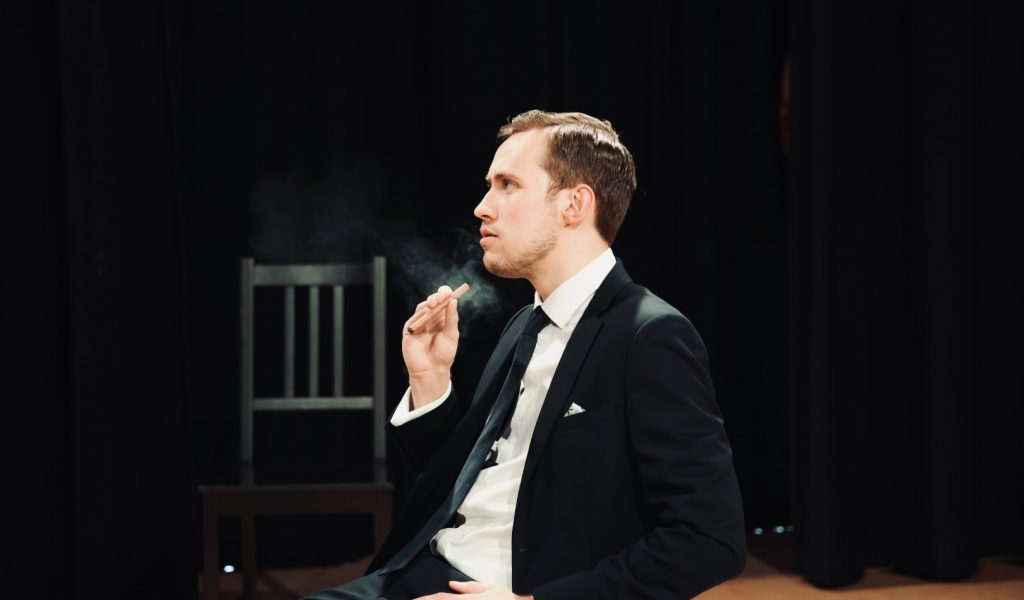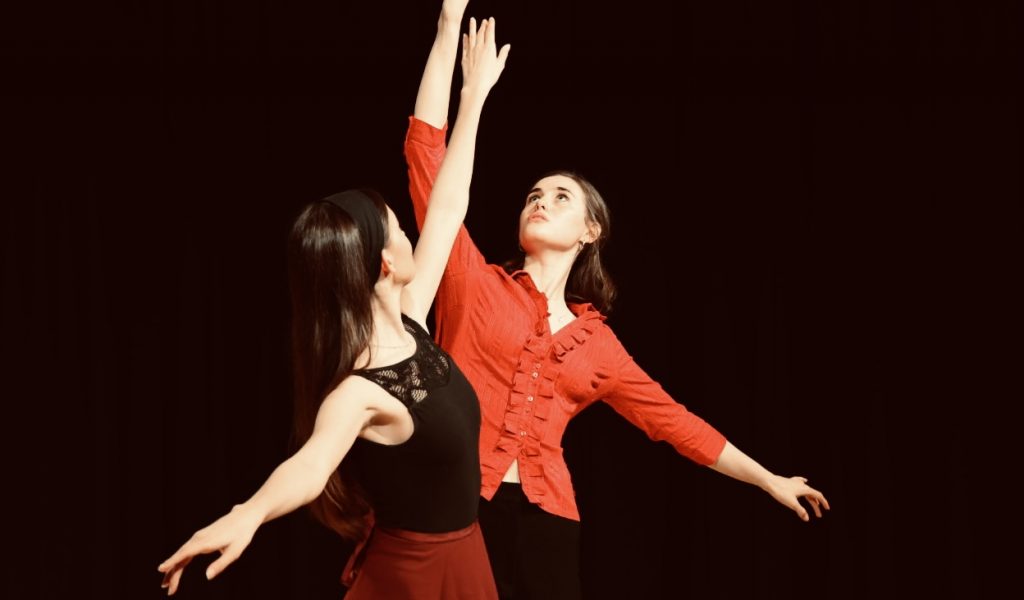Review: Theatre with Teeth’s ‘It’s a Woman’s World’

Isabella Ankerson, Deputy Online Editor, reviews Theatre with Teeth’s newest production, It’s a Woman’s World.
Written by the talented Anouk Saint and directed by Amélie Ashley-Timms and Emily Parker Humphreys, It’s a Woman’s World thrusts you into the hustle and bustle of 1950s Hollywood and introduces you to the lives of numerous young actresses who are desperately trying to make their own way in the new world of cinema. The narrative follows the lives of three women – Mary Costa, played by Olivia Hollreiser, Adrianna Caselotti, played by Sophia Pettit, and Helene Stanley, played by Lara Lisozzi-Lenik – a trio of actresses who are attempting to find their autonomy as women working in a man’s world.
Embodying class, independence and beauty, Costa forms the backbone of the play’s story and acts as a central mouthpiece for the production’s feminist criticisms. As the long-term favourite and money-making face of Bill Meyer’s studio, Hollreiser fulfils the role of a 29-year-old who fears that her age may indicate the nearing end of her successful acting career. Meyer, played by Oli Silverman, is portrayed as the typical slimy and over-controlling studio owner who, as he soon realises, is nothing without his women. He attempts to tighten his grasps over Costa but faces backlash as she decides to break free from his shackles and open her own studio – one which allows women to be the mastermind behind the camera, not just the ‘pretty face’ in front. Her assertive demeanour made her a ringleader for female empowerment in the play – taking Stanley and Caselotti under her wing in the attempt to encourage them to escape and spread their wings.
Meyer: Don’t make a scene.
Costa: That’s what I’m paid to do.

A similar story is told by Lisozzi-Lenik as Stanley, an elegant and gifted dancer who is beginning to feel the pressures of a wavering career. I particularly enjoyed the sense of depth which was given to her character in an individual interview scene, seemingly between Stanley and the audience, in which she stripped down to her bare bones to reveal the truth about her experiences as an actress and dancer. In her vulnerability, she is ‘rescued’ by Jim Michaels, played by Rafael Harris, who showers her with face-value compliments in the mere attempt to recruit her as a model for his stop-motion films. We are presented with the typical saviour complex here: a young woman who is looking for a second wind her career, and a young man who has ambitious plans to make it big in the film production industry. When Michael tells her that she is his “partner”, Stanley fickly believes him, but from an audience’s perspective it is heartbreakingly obvious that this partnership was, unsurprisingly, for the gain of the patriarchy. An ever-present yet important message is communicated here: for men in the industry, women are merely a means to an end.

As Caselotti, Pettit embodies a particularly gut-wrenching yet crucial role. Adrianna’s story, I felt, gave the production an edge which made it somewhat unique from the swathes of feminist accounts that exist already. Showcasing the trials and tribulations of life as a 15-year-old child actor – characterised by endless rehearsals, sleep deprivation and drug use – Caselotti’s tale highlighted an aspect of the film world which has been largely omitted from the broader narrative. One scene which stood out to me must be Caselotti’s voice acting session in which Frank Whitford, played by Oisin Maguire and Debbie Ann, played by Izzy Maunder, display a gruelling sense of harshness as they urge the young girl to sound ‘more like a child’, or ‘kinder’ and ‘softer’. You can’t help but feel a sense of sympathy for the young girl; her bereft and panicked countenance speaks volumes for countless young actresses like her – even today. Just as her secrets are exposed to her mother, played by Lucy Jarvis-Chase, the brutal realities of the lives of these women are also brought to the forefront. The shock-factor of her drug overdose scene marked a significant turning point in the production’s narrative and demonstrated just how far these women can be pushed by the pressures of their industry, especially when their cries for help are silenced by the men who control them.
The company’s casting of Tiare Hanilton as Susie Cee was a nice addition to the production, in my opinion. I felt that her presence brought a sense of comic relief to an otherwise dark narrative, but on a much deeper level her role as an interrogative journalist represented a very important aspect of life under the showbiz spotlight. Her interviews with Costa and Stanley give rise to intimate and emotional moments in which they reflect on their careers and begin to realise their need for independence. The response of the three actresses to the headlines in a well-choreographed whole-cast scene also sums up just how the tabloids can impact the lives of film stars, let alone celebrities in general. As all three women experience, a single story has the potential to be career-damning when it’s spun to appeal to the gossiping public. Indeed, you can make it to the front page, but as Caselotti finds, the press doesn’t always sing your praises.

My only criticism is that the play’s length meant that we never get to learn more about what the girls go on to do in their futures. Does Helene manage to break free from her seven-year contract with Meyer and Michaels? Is Costa’s studio a success? Will Caselotti manage to save her reputation and career? That said, the production showcased a fantastic array of dance, lighting and sound – bringing to light a clearly well-researched feminist narrative which remains a prevalent topic in today’s society and should keep being discussed.
The talented cast of It’s A Woman’s World will be performing at Edinburgh Fringe Festival from 14th – 20thAugust. If you find yourself in that neck of the woods, I’d highly recommend going to watch!
For more information, updates and content, check out the production’s Instagram and TikTok pages.


